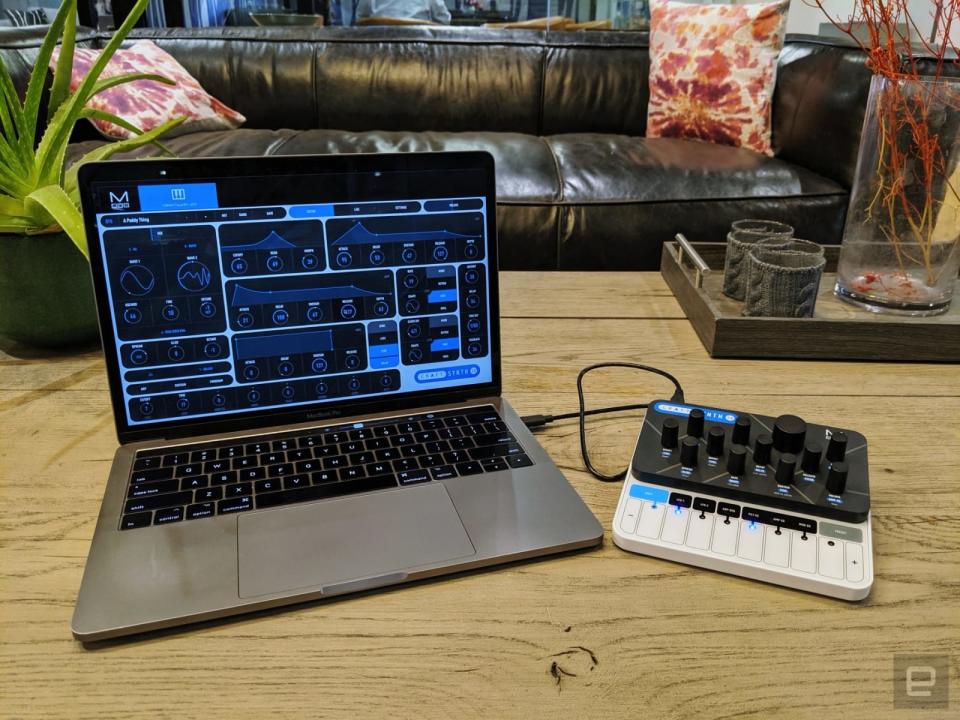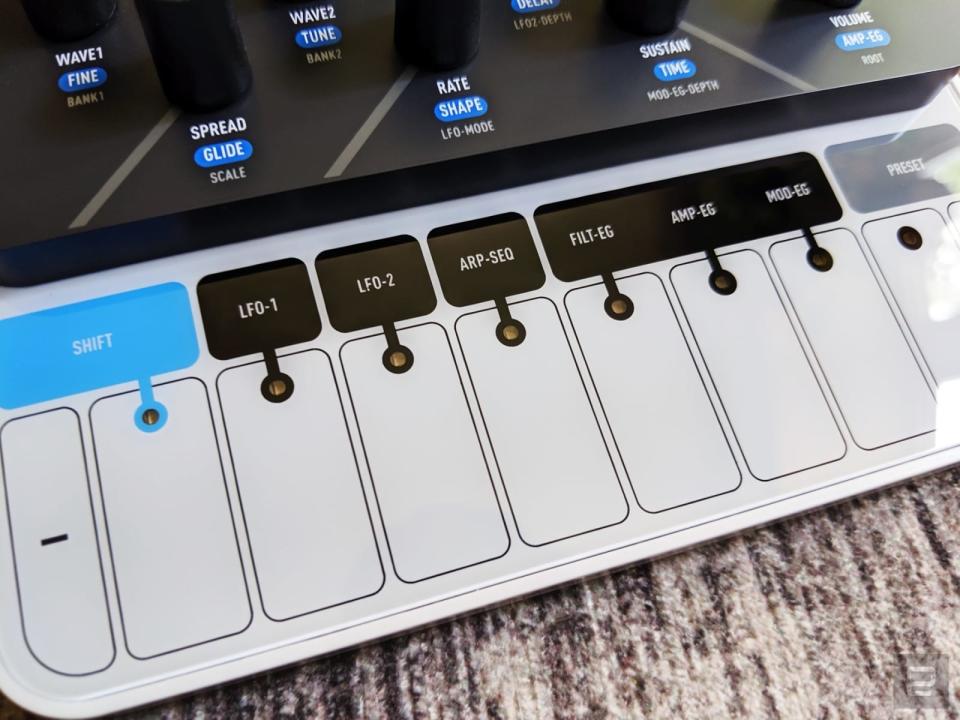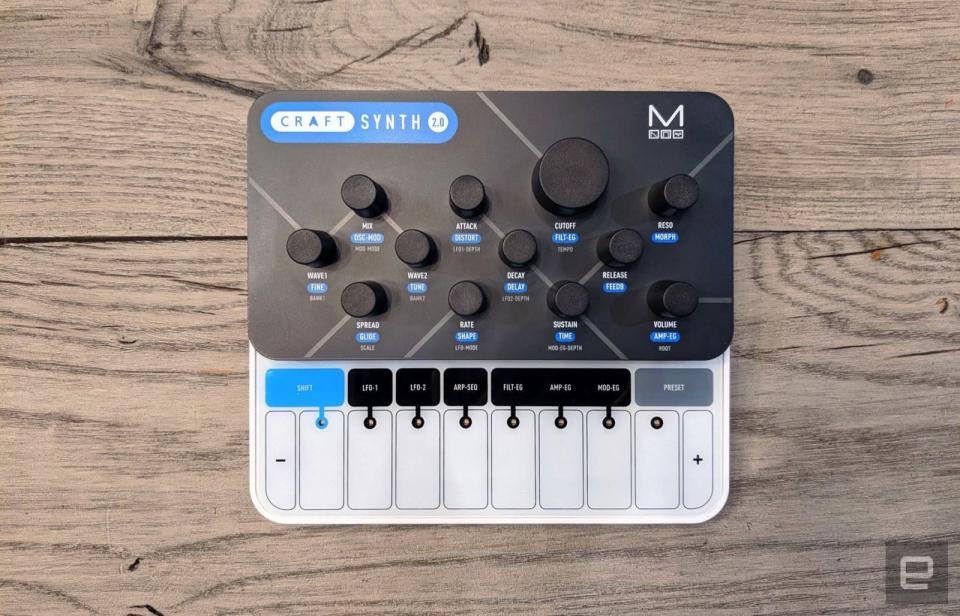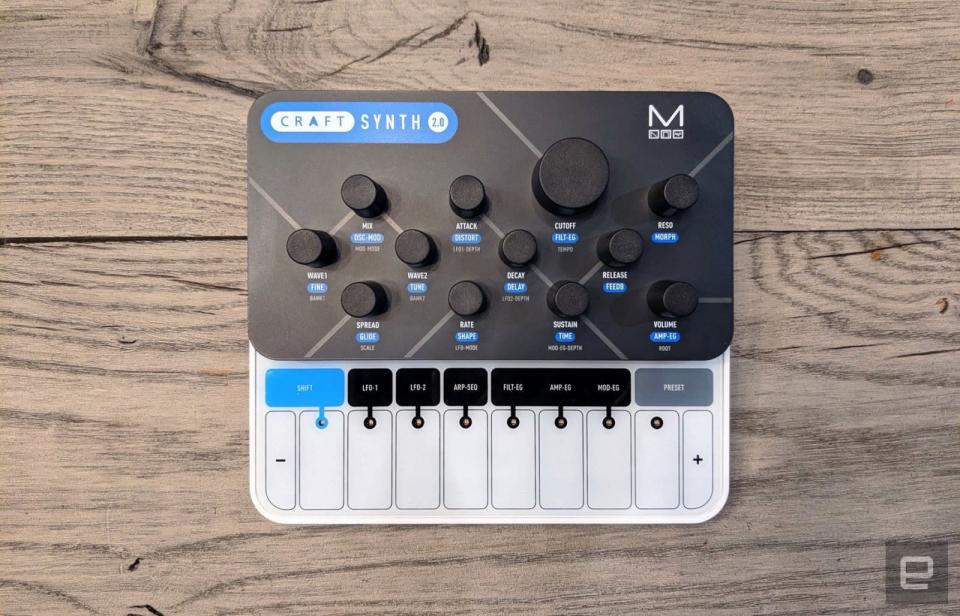CraftSynth 2.0 is portable, fun and a little bit flimsy
Modal Electronics latest entry into the world of affordable synthesizers is truly unique.
Teenage Engineering says the Pocket Operator series is about compromising on everything except sound quality. But I think UK-based Modal Electronics may have beaten it at its own game. The CraftSynth 2.0 (from here on out called Craft 2) is a tiny, cheap synthesizer that sounds huge and is stunningly flexible. But like any synth in this price range -- the Craft 2 costs $149 -- there are those aforementioned compromises.
Before we get to the sacrifices, let's run through the features. The Craft 2 is a monophonic wavetable synthesizer. That means, theoretically, you can only play one note at a time. However, a "spread" function detunes the eight oscillators to fatten up the sound or play full chords. Even though there are eight oscillators, they're stacked, so you only select two different wave forms at a time (each one is played on four oscillators simultaneously). That's not necessarily a con; it's part of what makes the Craft 2 sound so rich and thick.
Those oscillators are also what makes Modal's instrument so unique. There are a number of battery-powered synths that cost less than $200, but to my knowledge, none of them top Craft 2's 40 selectable wave forms or 16-oscillator mod schemes. That means you can use the two different waves not only to make sounds but also to modulate the other, creating whole new textures and timbres. There are familiar options like frequency modulation, hard sync and ring modulation as well as more-exotic options like window sync, de-rez and Scrunch Phaseshaper... whatever that is.
The wave shapes themselves are equally exotic. While there are your standard virtual analog square, saw and sine waves, there's also a selection of sounds from Modal's high-end 002 synth ($4,495), a bank of mathematically generated wave forms and one derived from vocal noises. They all sound great too: There really isn't a dud to be found here. And honestly, it's super fun to get lost in sound design, finding new and interesting ways to play the oscillators off one another.
The built-in distortion and delay effects take sound design a step further. The former lets you add a little crunch to a bass or an abrasive edge to a lead. The latter helps mask its monophonic shortcomings when playing pads. It would have been nice to see a reverb added as well, but honestly I'm probably being a bit greedy. Most of the competition only has one effect built in, if that.
There are also two audio-rate LFOs for adding some movement to your newly created synth tones, plus a modulation envelope, all of which can be assigned to change different parameters on the Craft 2, from the wave shape to the delay time to the resonance of the filter. The filter, by the way, is morphable from low pass to high pass to band pass. It doesn't have a ton of personality, but it gets the job done.
Now for the bad news: As powerful as all of these features are, using them on the synth itself is confusing. There are 12 flimsy-feeling knobs on the front, each with at least two -- most with three -- different functions. The only indication as to what you're doing is a series of LEDs on the keyboard that light up or turn off as you spin a knob. This fine for things like volume or cutoff, where you're dealing with an amount of something (more lights = more of whatever). But it's basically useless if you're trying to change wavetables, scales or oscillator modulation schemes. I'm never going to remember that the fourth light is "triangle wavefold."

Thankfully, there's an excellent app for changing all the various parameters, and it works on Windows, Mac, iOS and Android. There's even a VST plug-in so you can control the Craft 2 via your digital audio workstation of choice, be that Logic Pro, Ableton or FL Studio. The app exposes even more controls and options than you have on the face of the synth, which is not unlike the OP-Z. It's a great piece of software that many other synth makers could learn a thing or two from. It's just a shame that the app seems necessary to make the most of the Craft 2. Without it, I feel like I'm flying blind.
It doesn't help that the "membrane" controls for playing notes and changing knob functions are pretty meh. I own several Volcas, so I'm used to touch strip controllers, but they feel slightly less responsive and more finicky on the Craft 2.

You'll also notice something odd about the controls. They're not laid out like a piano's; instead there are eight keys straight across the front, and you pick a scale for them to play. It makes banging out a quick melody super easy, though it might seem a bit alien if you're used to playing a normal keyboard.
Honestly, your best bet is to connect an external keyboard or sequencer -- especially since there's no proper sequencer like you'd find on a Volca. There's a programmable arpeggiator, but that's it. Thankfully there are full-size five-pin MIDI DIN in and out ports here. Plus the Craft 2 supports MIDI over USB, so you can control it from your computer. It's also worth noting that there are ⅛-inch sync jacks for connecting to Volcas, Pocket Operators and other gear, which really simplifies the process of integrating the Craft 2 into your portable music-making setup.
It's strange to hold Modal Electronics' CraftSynth 2.0 in your hands knowing what's underneath the hood. It's unassuming, and frankly, it feels kinda flimsy. Once you plug it into a decent set of headphones or speakers, though, it comes alive. The fact that these sounds come out of something that weighs just 12.5 ounces when loaded with three double-A batteries is amazing. I wouldn't haphazardly toss this in a gym bag or wander too far from your phone, just in case you need the app to make sense out of something. But if you're looking to add to a collection of Volcas or dip your toes in the world of hardware synths, the Craft 2 is probably worth considering.



